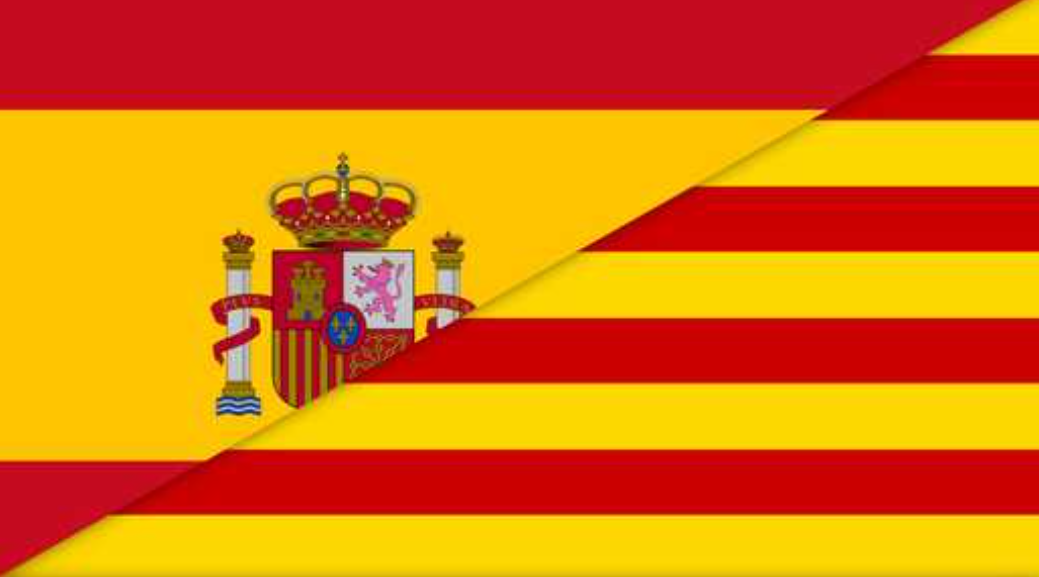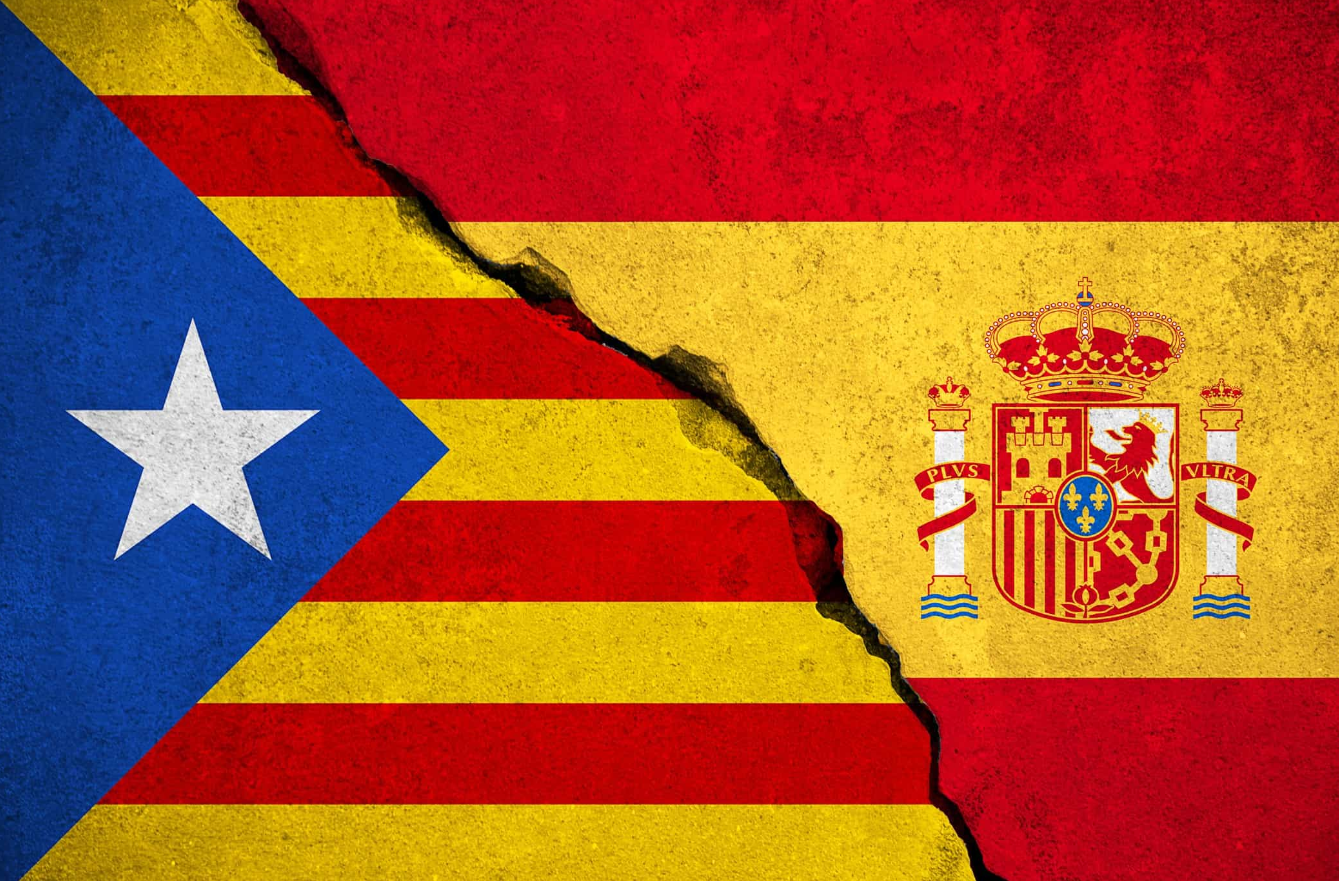When we look at the languages spoken on the Iberian Peninsula, Spanish, and Catalan are particularly interesting to compare. Both languages started from Latin, so they share a lot of common ground in their basic structure and vocabulary. This makes them sound different and have different words for things, which is not just about language but also about culture. So, it’s a pretty intriguing topic when we think about how these similarities and differences affect how well people can speak each other’s language or understand each other’s culture.
Similarities: Spanish vs Catalan
Spelling and Grammar
Spanish and Catalan are quite similar in terms of spelling and grammar, mostly because they both come from Latin. They use almost the same alphabet, though Catalan doesn’t have the ‘ñ’ that Spanish does. Both languages focus a lot on changing verbs to show different tenses, who’s doing the action, and how many people are involved.
Also, both languages use grammatical gender and have similar rules for putting sentences together. This makes it easier to learn one if you already know the other.
Vocabulary
Spanish and Catalan have a lot in common, especially when it comes to basic words. This is because both languages come from Latin. Let’s look at some examples. The numbers ‘two,’ ‘three,’ and ‘four’ are ‘dos,’ ‘tres,’ and ‘cuatro’ in Spanish. In Catalan, they’re ‘dos,’ ‘tres,’ and ‘quatre.’ See the similarity?
Also, consider common verbs like ‘to be’ and ‘to have.’ In Spanish, these are ‘ser’ and ‘tener.’ In Catalan, they’re ‘ser’ and ‘tenir.’ So, knowing one language can really help you understand the other. It’s quite handy, isn’t it?
This shared background doesn’t just show their connection; it makes learning one language easier if you know the other.
Pronunciation
Understanding how Spanish and Catalan are pronounced shows they’re quite similar, making it easier for speakers of each to understand and learn the other language. Both Spanish and Catalan have a lot of the same sounds, especially with consonants like /b/, /d/, /g/, and /f/. This really helps speakers get what the other is saying.
Also, both languages come from Latin, which you can hear in their vowel sounds. Catalan does have a few more vowel sounds, though. These pronunciation similarities make communicating and learning between the two languages pretty smooth.
Differences: Spanish vs Catalan

Spelling and Grammar Differences
Exploring how Spanish and Catalan spell and use grammar shows they’re quite different, even though both come from Latin. Catalan picks up some tricks from French, which changes its words and spelling. For example, it uses ‘ç’ whereas Spanish would use ‘z’.
When talking about past events, Spanish often uses a simple past tense, but Catalan likes to mix it up with a periphrastic past, using the verb ‘anar’ (which means ‘to go’) plus an infinitive. Also, Catalan has this unique thing where it puts specific articles before possessive adjectives, something you don’t see in Spanish.
These differences aren’t just about language; they tell us about the history and culture that shaped each one, highlighting the rich diversity in the Romance languages.
Pronunciation Differences
When we talk about how words are spelled and shaped in Spanish and Catalan, it’s clear there are big differences. Spanish has five simple vowel sounds.
Catalan goes a step further, with more complex sounds including two types of ‘e’ and ‘o’, and a neutral vowel that doesn’t exist in Spanish. Catalan also uses unique sounds like /ʒ/ (think of the ‘s’ in ‘vision’) and /ʃ/ (like the ‘sh’ in ‘shoe’), which you won’t find in Spanish.
Plus, the ‘ñ’ sound, a hallmark of Spanish, is missing in Catalan. These differences in pronunciation really set the two languages apart, giving each a distinct sound.
Historical and Cultural Differences
The history and culture of the Spanish and Catalan languages were shaped by different political and social situations. Spanish first appeared in the Castilian region and became the main language for government and culture as it spread through Spain and then the Americas during the colonial era.
Catalan, on the other hand, had its ups and downs, tied closely to Catalonia’s changing political landscapes. It thrived during times of local freedom but faced harsh restrictions, especially under Franco’s rule, as he tried to unify the language across Spain. This challenging history has given Catalan a unique identity and a strong sense of resilience, setting it apart from Spanish both culturally and socially.
Regional Distribution of Language
| Country | Region | Language Spoken |
| Spain | Europe | Catalan, Spanish |
| Mexico | North America | Spanish |
| Colombia | South America | Spanish |
| Argentina | South America | Spanish |
| Peru | South America | Spanish |
| Venezuela | South America | Spanish |
| Chile | South America | Spanish |
| Ecuador | South America | Spanish |
| Guatemala | Central America | Spanish |
| Cuba | Caribbean | Spanish |
| Bolivia | South America | Spanish |
| Dominican Republic | Caribbean | Spanish |
| Honduras | Central America | Spanish |
| Paraguay | South America | Spanish |
| El Salvador | Central America | Spanish |
| Nicaragua | Central America | Spanish |
| Costa Rica | Central America | Spanish |
| Puerto Rico | Caribbean | Spanish |
| Panama | Central America | Spanish |
| Uruguay | South America | Spanish |
| Equatorial Guinea | Africa | Spanish |
| Andorra | Europe | Catalan |
| France | Europe | Catalan |
| Italy | Europe | Catalan |
Spanish is spoken by around 550 million people all over the world, including Spain and most of Latin America, making it one of the most popular languages globally.
On the other hand, Catalan isn’t as widespread. About 10 million people speak Catalan, mostly in specific areas like Catalonia, the Balearic Islands, some parts of Valencia, and even the tiny country of Andorra. You can also find Catalan speakers in eastern Aragon and the Italian town of Alghero in Sardinia.
This shows that Catalan is more localized compared to Spanish, which you can hear just about everywhere.
Linguistic Preservation Efforts
Efforts to keep languages alive show big differences between Spanish and Catalan, especially in how much help they get from institutions and how actively communities participate. Spanish is spoken all over the world and enjoys strong international support and educational systems.
On the other hand, Catalan focuses more on local backing. Local governments and cultural groups in places like Catalonia and the Balearic Islands push for Catalan in schools. They want kids to keep speaking it. Also, Catalan media is crucial in keeping the language strong.
These dedicated moves highlight how committed the community is to keeping Catalan alive, even when global languages dominate. It’s all about cherishing cultural identity and enjoying a rich variety of languages.
Also Read: Italian Vs Spanish: Which Language Is More Practical To Learn?
Spanish vs Catalan: Which Is Easier to Learn?

So, you’re thinking about diving into a new language and can’t decide between Spanish and Catalan? Let’s break it down! Spanish, or “Español,” is one of the most widely spoken languages in the world. It’s relatively straightforward with its grammar and pronunciation, making it accessible for beginners. Plus, there are tons of resources and learning tools available.
On the other hand, Catalan, or “Català,” might seem a bit trickier at first. It has unique sounds and grammar rules that might throw you off. But don’t let that scare you! Many people find Catalan’s structure logical once they get the hang of it. Plus, if you already know some Spanish or French, you’ll notice some helpful similarities. In the end, it boils down to what feels more comfortable for you and which language you feel more connected to.
Also Read: Spanish Vs French: Which Language Is More Practical To Learn?
Spanish vs Catalan: Which Is Useful to Learn?
Now, let’s talk about usefulness. Spanish is a no-brainer when it comes to global utility. With over 500 million speakers worldwide, it opens doors across Spain, Latin America, and even parts of the United States. Whether you’re traveling, working, or just making friends, Spanish is incredibly handy.
Catalan, though not as widespread, has its own perks. It’s the official language of Catalonia, Andorra, and parts of Valencia and the Balearic Islands. Learning Catalan can be a huge asset if you plan to live, work, or travel in these regions. It shows respect for the local culture and can help you connect on a deeper level with locals.
In summary, if you’re looking for a language with global reach, Spanish is your best bet. But if you have a special interest in the Catalan-speaking regions or love the idea of mastering a language with deep cultural roots, Catalan is definitely worth the effort. Either way, you’re in for a rewarding linguistic journey!
Conclusion
In conclusion, Spanish and Catalan are similar because they’re both Western Romance languages. But, they have their differences in how they sound, their grammar, and the cultures they come from. These differences show the rich histories and cultures behind each language. Learning Spanish and Catalan helps us understand more about the diverse and complex cultures of the Iberian Peninsula. For those learning these languages, knowing these differences can make you better at communicating and appreciating the culture.
Whether you’re learning for fun or to talk to more people, studying Spanish and Catalan shows how language changes with history, society, and location. It’s not just schoolwork; it’s about discovering a lively cultural heritage. Keep visiting The Translation Blog for more translation articles like this.

